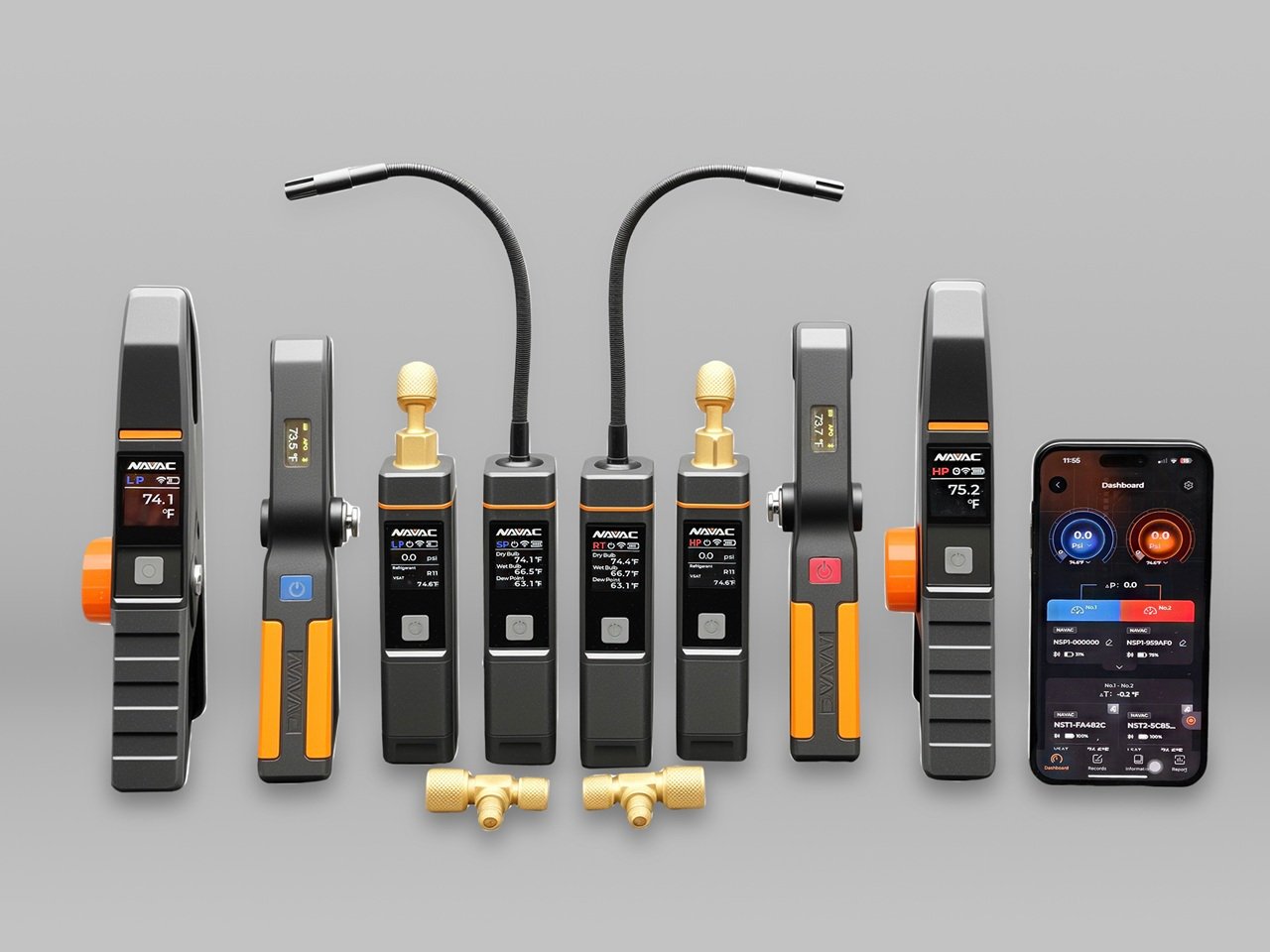NAVAC launches Smart Probe line for HVAC diagnostics in the US
NAVAC, a leading US-based supplier of HVAC vacuum pumps and tools, has introduced a new range of Smart Probes designed to enhance field diagnostics for HVAC professionals. The product line includes wireless pressure probes, psychrometers, and temperature clamps that offer standalone functionality, rugged design, and compatibility with mobile platforms.
The new tools connect with NAVAC’s proprietary myNAVAC mobile app and the third-party measureQuick analytics platform. They are engineered to provide accurate measurements with or without internet access, enabling flexible use on various job sites.
Models in the lineup include:
-
NST1 / NST2: Bluetooth low and high temperature probes with digital display
-
NSTL: Large Bluetooth temperature clamp with digital display
-
NSP1: Bluetooth pressure probe with digital display
-
NSH1: Bluetooth psychrometer with digital display
-
SK2TP1: Smart refrigerant diagnostics kit
-
SK3TPH1: Smart refrigerant and air side diagnostics kit
The probes feature large onboard displays that support full standalone operation, allowing users to view multiple data points simultaneously. The devices are built with rugged housings and screen protection for durability in demanding environments. When connected to compatible apps, users can view synchronized data from several probes, including automatic calculations such as subcooling and superheating.
Several models, including the pressure probe, psychrometer, and NSTL clamp, feature a universal design that enables switching between high/low or supply/return modes, reducing the need for multiple separate tools. The bundled Smart Probe Kits include ¼" access valves and a variety of probes to support comprehensive diagnostics.
"With our new Smart Probe line, we're offering HVAC technicians a combination of durability, affordability, flexibility, and smart connectivity that simply doesn't exist elsewhere in the market," said Keith Keller, VP of HVAC Sales at NAVAC. "These tools are designed to work how techs actually work today – delivering instant diagnostics in the field and fitting seamlessly into mobile workflows that are rapidly becoming the norm."
